🌍📰 Your source for the latest international news.
Stay informed with real-time updates from around the globe.
#GlobalNews #WorldEvents #InternationalHeadlines
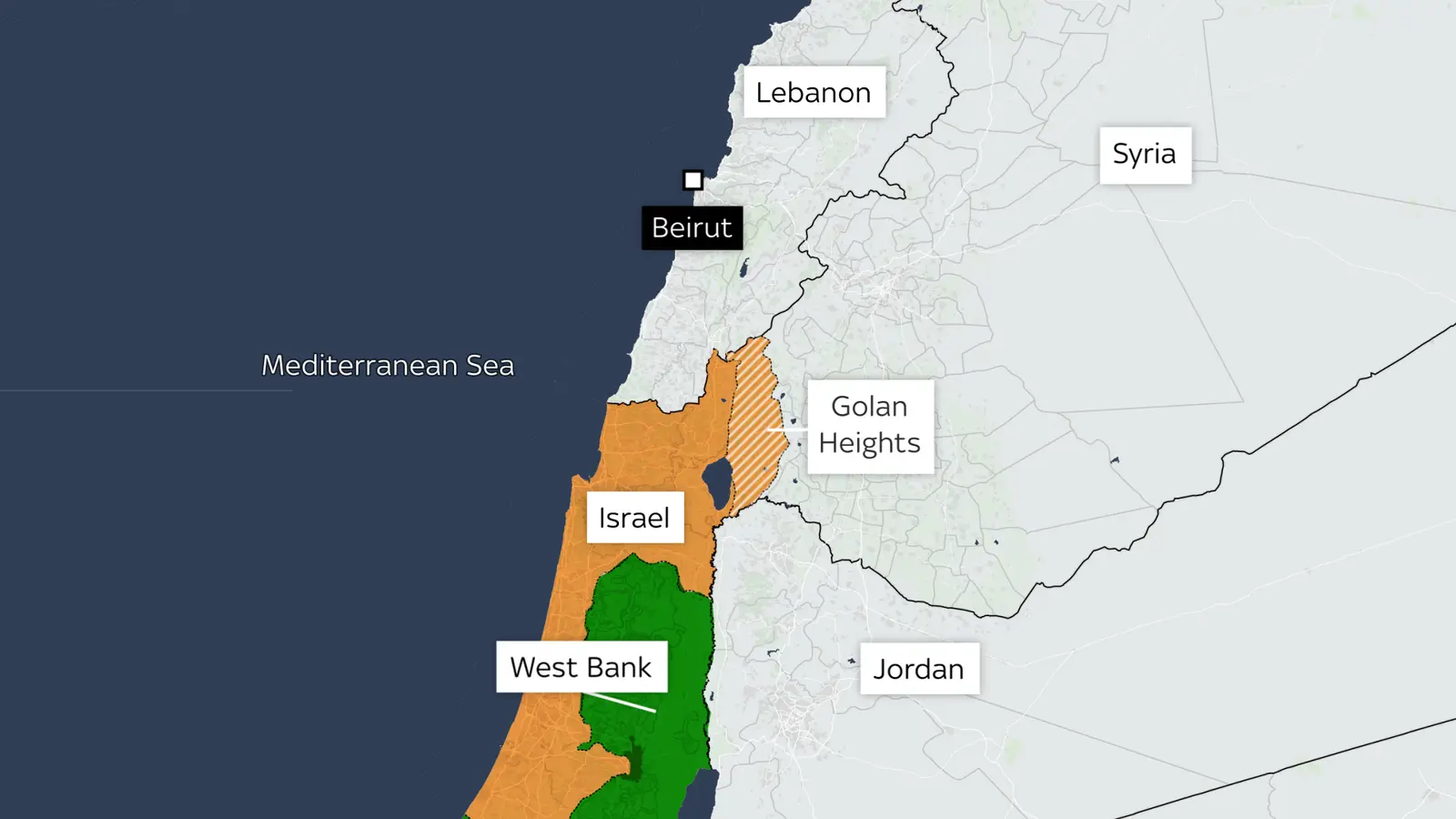
Israel will say it had no choice, but its airstrikes in Lebanon risks igniting a regional war
Israel carried out "pre-emptive" strikes against Hezbollah overnight, while the militant group says it has completed the "first phase" of an attack on 11 Israeli military sites.
This appears to have been a high-stakes Israeli military operation that risked igniting a regional war.
Israel will say it had no choice: One of the pillars of Israeli military doctrine has long been the principle that offence is the best form of defence.
It is not the first time it has used its air force hoping to defang an imminent threat. Israel insists it sent an armada of warplanes to the skies over Lebanon, more than a hundred strong, to stop an 'extensive planned attack involving thousands of rocket launches' about to be let loose by Hezbollah.
Just as Israel launched audacious air attacks obliterating Egyptian leader Gamal Abdel Nasser's air force in 1967 and Saddam Hussein's atomic programme in 1981, Israel says it despatched jets overnight to neutralise Hezbollah.
It is not clear how many enemy drones and missiles were already in the air. Hezbollah claims all 11 of its targets in Israel were hit and it launched 320 Katyusha rockets.
The primary strike it says was aimed at "a qualitative Israeli military target that will be announced later" as well as "enemy sites and barracks and Iron Dome [missile defence] platforms".
Israeli intelligence sources had claimed the airbase used in the strike on Shukr and the headquarters of Unit 8200, the Israeli military intelligence agency, north of Tel Aviv, were on Hezbollah's target list.
Advertisement
Hezbollah meanwhile says Israel's operation failed to pre-empt its long-awaited retaliation and insists it succeeded in striking targets deep within Israel.
Two questions for now: Hezbollah's next move and what this does to efforts to end the war in Gaza.
Will Hezbollah draw a line under the Shukr/Haniyeh affair? The organisation says today's action is over but is more planned in the coming days? All eyes are on its commander Hassan Nasrallah who will address his faithful by video link tonight.
He has not been seen in public since Hezbollah's war with Israel in 2006 for fear of being assassinated by Israeli jets himself.
Hezbollah attacked Israel in the wake of Hamas atrocities on 7 October and has been locked in an almost daily artillery duel with Israel over their border ever since.
Israeli intelligence claims Hezbollah has amassed an arsenal of 150,000 missiles secreted in the hills of southern Lebanon since 2006, 10 times the amount it possessed back then.
It has so far refrained from unleashing that firepower: Analysts believe its paymasters and patrons in Tehran prefer to keep that armoury in reserve as an insurance policy for the day Israel may attack Iran itself, as well as its alleged nuclear programme.
But Israel has been testing that theory for months now, responding with force to Hezbollah's attacks in the north. Each exchange of fire has the potential to escalate the region into a wider war through miscalculation and unintended mass civilian casualties.
So far, events overnight do not seem to have upended the fragile efforts towards a ceasefire in Gaza. Delegations are still on their way to Cairo for the next round of talks. If anything the escalation reemphasises the urgency behind the diplomacy.
But it could also offer the Israelis a distraction, should they want one, from huge pressure from the US to make the concessions required to reach a deal.
Most Israeli observers believe Israel's Prime Minister Benjamin Netanyahu does not want a ceasefire on the terms currently being negotiated for fear it could lead to his coalition government falling apart.
But US, Qatari and Egyptian mediators insist the truce terms are the best and possibly last chance of bringing home Israel's hostages and ending the war.
They also believe a ceasefire in Gaza is the best way of reducing tensions in the north - which have exploded overnight so spectacularly.
Read More...
1 year ago
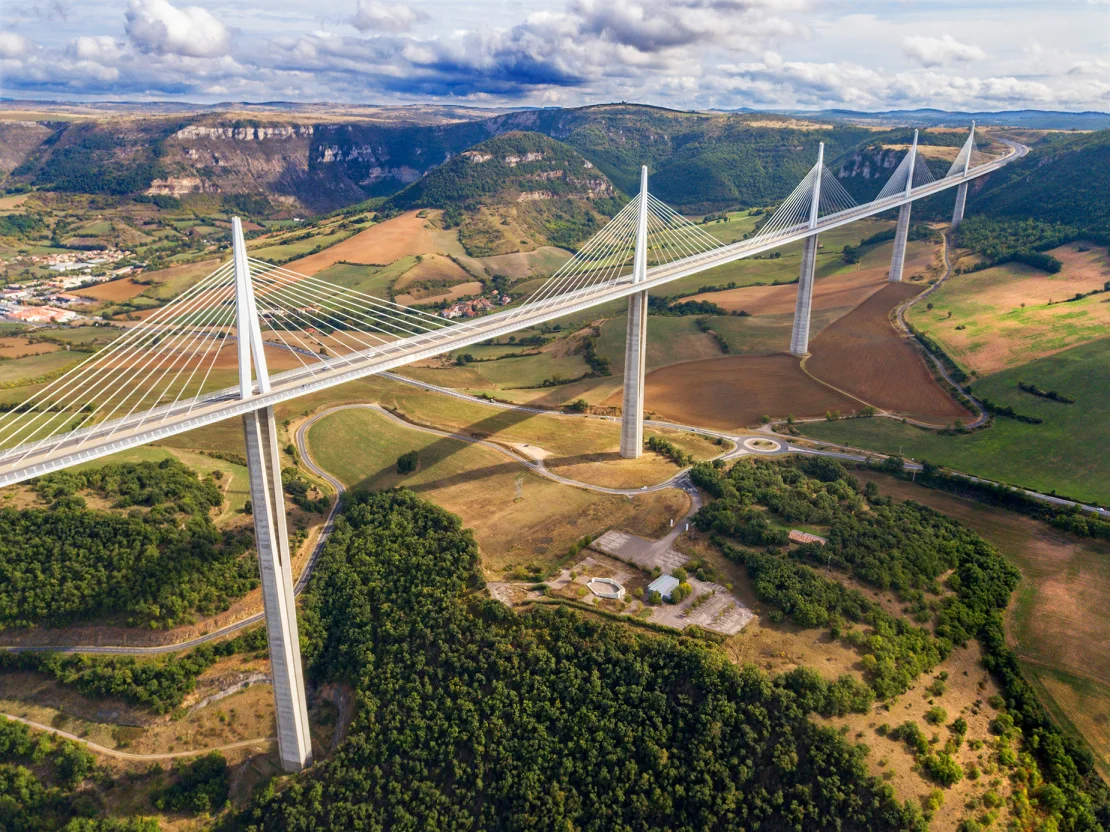
How the world’s tallest bridge changed the map of Europe
Soaring across the scenic landscape, it’s indisputably one of the most beautiful bridges in the world.
Often swathed by mist, so that it feels like crossing through clouds, it is so famous that it has its own visitor center, and people plan trips to the area solely to drive across it. The bridge can even be easily seen from space.
The Golden Gate? No. This is the Millau Viaduct, a perfect example of where engineering meets art. Cantilevered high over the Tarn gorge in southern France, and yawning 2,460 meters (8,070 feet) in length, the Millau Viaduct is the world’s tallest bridge, with a structural height of 336.4 meters (1,104 feet).
But not even those impressive statistics do it justice.
Unlike other famous bridges, which usually connect two points of similar altitude, the Millau Viaduct effectively becomes the opposite of a rollercoaster, plying a flat course across the valley, as the land ripples up and down underneath it.
The seven piers range from 78 meters to 245 meters (256-804 feet) in height, each calculated to the millimeter to make a perfectly smooth experience for drivers soaring across the Tarn. There’s a 342m (1,122ft) span between each pairing – large enough for the Eiffel Tower to slot in the gap. The piers are coupled with seven steel pylons, each 87 meters (285 feet) high, with 11 cable stays fanning out on either side. This all helps keep the “deck” – the road surface, which is around 14 feet thick and weighs 36,000 tons, or the equivalent of 5,100 African elephants – steady.
At the same time as being a work of absolute precision, it’s also beautiful. The Gorges du Tarn area is a protected landscape, yet instead of spoiling the view, the Millau Viaduct enhances it.
It’s a “wonder of the modern world” and an “engineering marvel,” says David Knight, director of design and engineering at Cake Industries and specialist adviser to the Institution of Civil Engineers.
“It’s that perfect interplay of architecture and engineering that means that everybody who sees it thinks it’s spectacular.”
Those living in the valley below look up with wonder; those driving across it – this road, the A75 from Clermont-Ferrand to Béziers, is one of the main north-south routes in France – see the gentle curve arcing across the landscape as they approach. “It gives everyone who uses it a sense of awe,” says Knight.
No wonder that for many, driving across the viaduct is something you travel to do, not something you do while traveling.
So how did this wonder of the modern world come to be built in the middle of France? Why did it take two decades to plan, before opening to traffic in December 2004? And how did it effectively change the map of Europe?
A bridge too far?
The answer to all those questions is geography. The Massif Central is a vast area of highlands cut by deep valleys and gorges, roughly located in the middle part of the bottom half of France. Sprawling across about 15% of the country, and bordered by the Alps to the east, it’s one of the obstacles anyone traveling from north to south of the country – or from northern Europe to Spain – must pass.
So important was this viaduct – but also so difficult – that it was two decades in the planning, according to Michel Virlogeux, the engineer who led the design team – and who first started work on it in September 1987.
“The first problem was not what bridge to build, but where the motorway would pass,” he says.
At the time the Massif Central was remote, despite its central location. There was a single-track railway line, and the roads “weren’t very good,” he says. “The central part of France couldn’t develop due to lack of transport.”
So in the 1980s, the French government decided to upgrade the road network, with then-president Valery Giscard d’Estaing deciding on a freeway. One of the aims was to unclog the notoriously choked road around Millau, where the road descended into the valley and crossed the Tarn river in the city center. Every day there were tailbacks of around 20 kilometers (12.5 miles) either side of the town.
“Going through Millau used to be a traffic blackspot for tourists,” says Emmanuelle Gazel, current mayor of Millau. “There were lots of traffic jams. There were kilometers and kilometers of tailbacks. It gave a very bad image of our area… in terms of pollution it was terrible. And locals took a long time getting from one point to another.”
In the words of Lord Norman Foster, who became the architect of the bridge, the area was “a valley of extreme beauty which had become one of France’s worst bottlenecks.”
The decision to build a bridge around Millau was taken in September 1986, says Virlogeux, who at the time was head of the large bridges division of the French administration. There was just one problem: the geography of the area meant there was no obvious solution. “We started looking where was possible, but many options were bad, and it took almost three years to find a solution,” he says.
One idea was to route the freeway east of Millau, keeping the road on the plateaus, with two suspension bridges to cross the valleys on either side. But that wouldn’t have allowed a connection with Millau – “the only big city between Clermont-Ferrand and Béziers,” says Virlogeux – which needed the economic boost.
So they called in the experts: geologists, geo technologists, road engineers and Virlogeux, who had already designed the Pont de Normandie – the 7,032-foot bridge spanning the river Seine in the northern region of Normandy.
The team’s first idea was to run west of Millau, bringing the road lower in altitude down into the valley, across a bridge at a lower level and up again to the plateau and then a tunnel. They were in the stages of planning when the team’s road engineer, Jacques Soubeyran, had a lightbulb moment.
“He asked, ‘Why are you going into the valley?’ and it was a big shock,” remembers Virlogeux. “The motorway was passing 300 meters above the river. I hadn’t even considered the possibility of passing at a high level. Immediately, I said we were being stupid. We started working on the idea of passing plateau to plateau.”
After just eight days they had detailed drawings of the rippling ground levels, as well as a possible altitude for a freeway snaking across it.
The importance of elegance
They knew where they wanted the viaduct – but what should it look like?
Virlogeux immediately knew that the best option would be a cable-stayed bridge. “Cable is the most efficient structure to carry a load, and you can have a very slender deck so it’s much better to look at,” he says.
Slenderness was important. There was already controversy about the idea of running a bridge through such a famous landscape. To avoid ruining the landscape, it had to “look very quiet.”
Getting the go-ahead took some years. The French government started a competition for the design of the bridge, and in 1996 the commission was won by a group led by Virlogeux as engineer (who had left his previous job a year earlier) and the UK’s Norman Foster – now Lord Foster – as architect. Foster calls their plan to span the valley, rather than the river, a “philosophical concept” that distinguished them from other competitors.
But with the local community up in arms at the idea of their area of natural beauty being spoiled, they face what Foster calls a “design challenge… to create something that would enhance the landscape, sit gently on the floor of the valley – to be the most delicate and light intervention.” Virlogeux says it had to be “pure and simple.”
Yet this precious landscape, which had to be protected aesthetically, was extremely difficult to work around.
“The wind forces at this level are huge and the columns have to accommodate the enormous expansion and contraction of the deck,” says Foster. And we’re not just talking a gentle bounce. The 2,460-meter (8,070-foot) bridge can expand or contract by 50 centimeters (1.6 feet) depending on the weather. Their solution was to add extension joints.
Luckily, while the old adage is that architects and engineers should be at loggerheads, and while you might imagine that two titans of architecture and engineering might clash, Foster and Virlogeux have nothing but praise for each other. Virlogeux says it was a “very easy” working relationship, while for Foster it was a “meeting of minds.” The team had twice-monthly meetings in London while working on the design. “He would ask me, ‘Why do you want this and not that?’ and after that he’d take a decision in five minutes,” says Virlogeux. “Once there was a major controversy about the shape of the deck. He asked me what I proposed, if I was sure it would work. Then he said, ‘OK – architecture must not go against scientific needs.’”
Above the road, the sturdy columns “split” into two more flexible arms, making an artistic statement out of an engineering necessity.
The same goes for the curve of the road, which gently arcs across the valley. It’s not just beautiful; it ensures that there’s no visual overlap – and therefore confusion – for drivers at such a great height. Meanwhile the piers become slimmer as they rise towards the roadway, more or less halving from 24 meters wide at the bottom to 11 meters at the top.
Their design for a cable-stayed bridge with seven elegant piers marching across the landscape and what Foster calls “the snake of a road, improbably thin like a razor blade,” has stood the test of time.
The anxious build
If the design wasn’t challenging enough, then came the construction which started in October 2001. The project cost a cool 400 million euros ($437 million) and was financed by Eiffage, a private construction company which still has the concession for the bridge today. There were 290,000 tons of steel and concrete used to build it, and around 600 builders working on it.
“The huge challenge is what happens when you build it,” says Knight. “As you put the weight in different locations, it moves in different directions. There are different materials interacting with each other – this is as difficult as engineering gets.”
Foster calls the assembly of the deck “a true challenge.”
“It was serenely and slowly launched simultaneously from both sides over the temporary structural supports, meeting in the middle with millimeter precision.”
Virlogeux remembers the “critical wind situation” which risked damaging the structure during the build. Each “launching” operation – during which the deck was installed from both sides – would take up to three days, so they had to monitor the five-day forecast before starting out, to avoid causing damage before the deck reached the next pier.
It was only as the viaduct was put into place that the team could see if their design had worked – from an aesthetic point of view as much as an engineering one.
Every detail had been considered for its potential effect on the landscape, as well as whether it could resist the forces at that altitude.
Foster says that the first time he went to see it, “I was anxious to the point of almost being physically ill.” He had “agonized” over the color of the 154 cable stays – if they were light, they’d blend in with the sky but stand out against the landscape. He went with white – “but the agony was that I wouldn’t know if it was the right decision until it was built – and then it would be too late to change it.”
Luckily for him, the white worked. “I was almost sick with apprehension, but I remember arriving in a car and the bridge gradually coming into view and finally realizing that it was, after all, the right decision.”
Virlogeux was more sanguine. For him, the greatest challenge was overcoming local opposition to be able to build. Getting the contract signed, he says, was the most stressful part. Signing it was “the moment I knew we would build it.”
President Jacques Chirac came to open the bridge and shake hands with the construction workers. Two days later, Virlogeux drove across it on his way back to Paris.
Bridging local hearts and minds
The viaduct may have been controversial when it was first mooted, but local hostility started melting away once it became clear what the project would look like.
“People thought that creating a bypass would mean tourists could avoid Millau and the town would empty out,” says Gazel, the mayor. “Some people thought that it would spoil our landscape, but actually it magnified it.” And it attracted visitors – in its first year alone, 10,000 cars would stop every weekend at the service area to take in the view.
Suddenly, going from the north to south of France, and on from northern Europe to Spain (or vice versa) was an easy experience.
Foster says he was “delighted” at the residents’ change of heart. “A bridge is about communication in the widest sense, not just connecting two plateaus but also linking people,” he says.
Today, the viaduct “has brought lots of tourists to discover Millau,” says Gazel.
“Many come for the viaduct, but discover all the other facets of our area. Others are traveling on vacation and stop off. Millau isn’t a blackspot anymore. It has become a destination – tourists choose to visit Millau, and they no longer have to endure the terrible tailbacks. So it didn’t empty out the town; on the contrary.”
As well as being an area of outstanding natural beauty, there is history around Millau. In Roman times, it was famous for its pottery, which was exported all around the empire, from northern Africa to England.
Visitors can walk around the base of the famous piers, or take a boat ride under the viaduct.
A long future ahead
Today, as it approaches its 20th anniversary, the Millau Viaduct is still going strong. Virlogeux says he’s “confident… it can resist a long time.” Where he is still, to this day, working on the Normandy Bridge, which needs regular maintenance, he stopped working on Millau a long time ago.
Each year it saves around 40,000 tons of CO2 emissions from heavy goods vehicles alone, according to Foster’s figures – the equivalent of 40,000 trees absorbing emissions over 40 years.
Gazel says the viaduct – which is part of the A75 autoroute – has changed the image of her town.
“It put us on the world map – when I say I’m mayor of Millau, it doesn’t matter where I am in the world, everyone knows Millau, thanks to the viaduct,” she adds. “The architectural and technological prowess, 20 years on, is still innovative – still extraordinary.”
Read More...
1 year ago
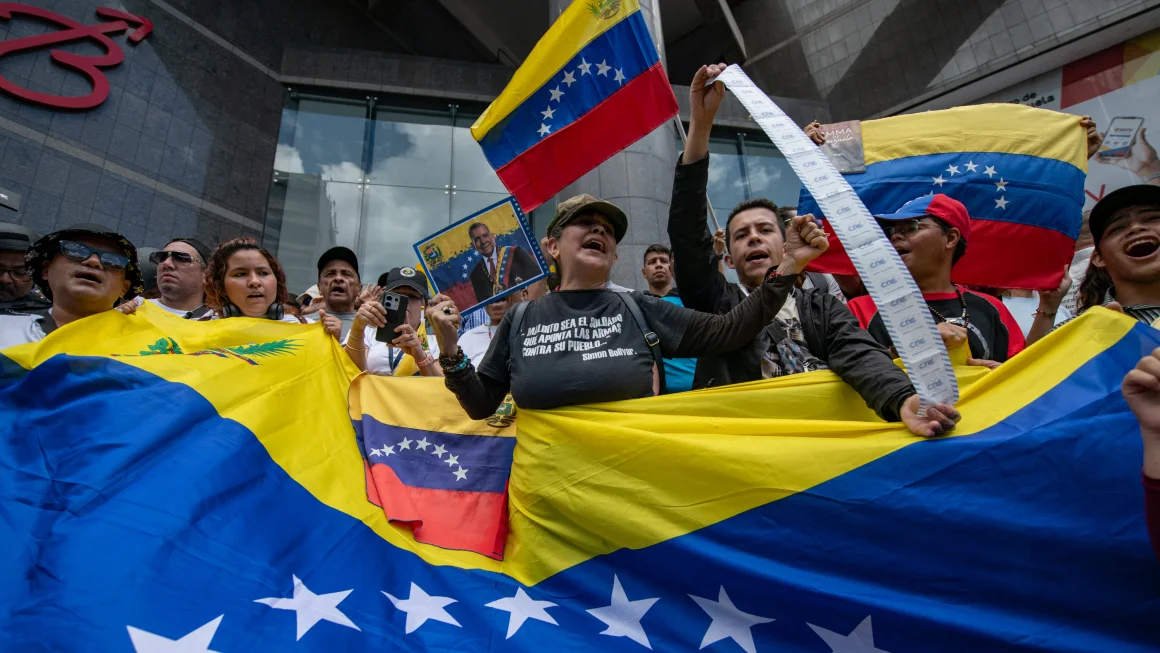
Venezuelans have seen this movie before, but Maduro should beware. This time, the ending could be different
It happened in Caracas on June 9, 2016, when I was there to cover a series of violent protests that had broken out in Venezuela.
That sunny day, as our CNN team was walking towards the building that houses the National Assembly for interviews, we noticed a group of men heading the same way from the opposite side of the street.
“Hurry up!,” CNN en español’s correspondent in Caracas Osmary Hernández said. “I think the colectivos are up the street.” We all picked up our pace and breathed a sigh of relief when we made it to the building. Colectivos are armed groups that function like a street gang, but are closely affiliated with the socialist government and often do their dirty work.
Moments after we made it inside the building, Julio Borges, an opposition member of the assembly and its former president, arrived in bad shape. He had a bloody nose and said a group of opposition legislators like him had been attacked by colectivos as they were headed to the office of the national electoral authority. The month before, President Nicolás Maduro had declared a “constitutional state of emergency.”
Even before that tumultuous period, it had become abundantly clear that Maduro’s government had absolute control of all three branches of government as well as the the National Electoral Council (CNE).
And, as we had just witnessed, it also controlled the streets of Caracas. Maduro, now 61, is a former bus driver who became a Caracas metro system union leader and rose through the ranks. He is the handpicked successor of the late strongman Hugo Chávez, who ruled Venezuela from 1999 until his death in 2013.
A new wave of violence shook Venezuela once again in 2019. In January of that year, Juan Guaidó, then president of the National Assembly, had proclaimed himself interim president of Venezuela. The then-35-year-old Guaidó argued that he had the constitutional right to the presidency as leader of the assembly because Maduro, who had been sworn in only days before, was an illegitimate president.
Both the opposition and leaders of several countries in the region had called the previous year’s election a sham. Guaidó convinced 50 countries that he had a right to be president, including the United States.
By June 2019, when I returned to Caracas, Guaidó had already attempted a military uprising that almost succeeded on April 30, followed by weeks of violent clashes between protesters and security forces that left dozens dead.
The world started to pay close attention to Venezuela once again in the last few months as the country was getting ready to hold a new presidential election. Would Maduro allow the opposition to run a candidate of its choosing? Would this be a free, fair, and transparent election? Would the colectivos once again be used to intimidate voters as they had done in previous elections?
The first and second questions were answered in January when opposition leader María Corina Machado was barred by Venezuela’s highest court from running for president (or any other elected position) for 15 years over alleged financial irregularities. Machado had won more than 90% of the vote in last October’s opposition primary. She attracted large crowds everywhere she went, even though the government did everything possible to stop her, even persecuting those who rented sound systems to her campaign.
The third question was answered in the last hours of the election itself on Sunday when colectivos showed up at at least one polling center in Caracas and started beating up opposition sympathizers who had been asked by the leadership to keep an eye on ballot boxes in an effort to prevent tampering.
Those of us who have been following Venezuela for decades have seen this movie before: a “sham” election to justify Maduro’s staying in power. Democracy has been gradually weakening in Venezuela over the last 25 years since the charismatic socialist leader Chávez rose to power in 1999.
While Venezuelans and the world awaited results Sunday night, the country’s electoral authority delayed publication, alleging the system had been targeted by hackers operating from North Macedonia without showing any evidence. This was not surprising in a country where all three branches of government are in the hands of government loyalists, hundreds of opposition leaders have been imprisoned, and true democracy hasn’t existed in a generation.
“Is there anything different this time?” That’s the question I asked Michael Shifter, the former president of the Inter-American Dialogue and current professor of Latin American Politics at Georgetown University, who has been following Venezuelan politics for decades.
Shifter said the Maduro victory was a “blatant, massive and egregious fraud,” but the opposition managed to do something it had been unable to do before: uniting behind a single candidate and going to the polls in massive numbers.
“The alternative [to participating in the election] was taking themselves completely out of the political game, saying ‘we refuse to take part in this unfair and unjust election,’ but that would’ve left the opposition in a weaker position in practical and political terms” as it happened in 2018 when the opposition decided to boycott the whole process.
“I think the opposition learned that refusing to take part in elections was not helping their cause. They recognized that even when the elections weren’t free and fair, they needed to defeat Maduro on his terms, which they’ve done,” Shifter said.
Venezuela’s CNE declared Maduro the winner Monday saying he had won with 51.2% of the votes, with 80% of the ballots counted. His main rival, opposition candidate Edmundo González, had obtained 44.2% of the votes, according to the body.
Critics like former Bolivian President Jorge Fernando “Tuto” Quiroga, who was one of several former heads of state prevented from flying to Venezuela by its government as they tried to serve as observers, called the Maduro government a “desperate regime; an open, pure and hard tyranny that has chosen to steal the presidency staging a fraudulent coronation.” In an interview with CNN, he said that even the math didn’t add up when Venezuelan electoral authorities declared a winner with 80% of the vote counted.
“When you’re in first grade, you learn that 20 is more than seven,” Quiroga said. “The probability that [opposition presidential candidate] Edmundo [González] could’ve won was low, but still arithmetically possible,” at that point, he said, adding that prior to the election there were credible exit polls showing González was ahead by as much as 40 percent.
Just like 2016 and 2019, violence has returned to Venezuela. At least 11 people died during protests in Venezuela on Monday, according to the non-governmental organization Foro Penal on social media. Venezuelan authorities say more than 700 people were detained in the protests. The Venezuelan opposition political party Voluntad Popular said Tuesday that its leader Freddy Superlano has been kidnapped.
Unlike the 2018 election, Shifter says, this time the opposition “knows they won, and the regime knows they won.” The question now is how long the governing coalition that includes not only the socialists, but the armed forces can hold, Shifter said.
If that coalition becomes “divided and weaker, the armed forces may say ‘this ship is sinking and we don’t want to go down with it,’” Shifter said.
SOURCE: CNN
Read More...
1 year ago
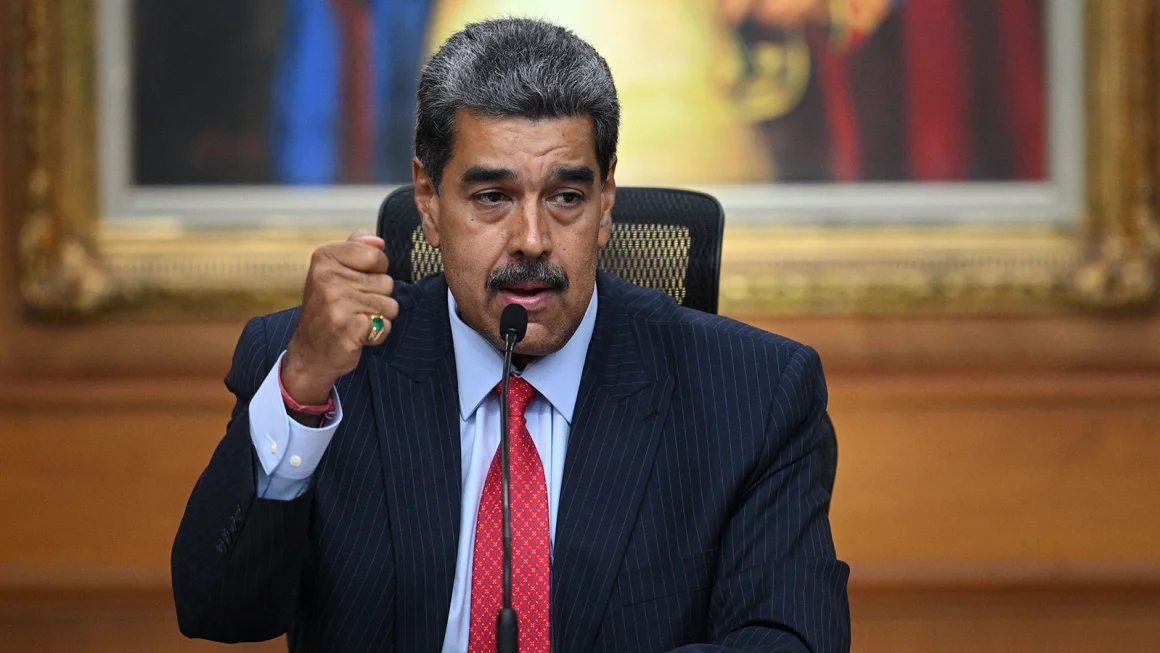
Maduro warns he’ll call for a ‘new revolution’ if forced by ‘North American imperialism’
Venezuela’s President Nicolas Maduro warned Wednesday that he will not hesitate to call on the population for a “new revolution” if forced by what he calls “North American imperialism and fascist criminals.”
Maduro’s comments come amid deadly protests across the country following its disputed presidential election victory, which the US and several other countries have refused to recognize.
“I would not like to go to other ways of making revolution, I say it solemnly from political power, we want to continue the path that [Hugo] Chavez outlined,” Maduro said in Caracas during a press conference with international media.
“But if North American imperialism and fascist criminals force us, my pulse will not tremble to call the people to a new revolution with other characteristics,” he added.
The president’s comments come just hours after US National Security spokesman John Kirby called on Maduro to “come clean” on Sunday’s election.
“Our patience, and that of the international community, is running out on waiting for the Venezuelan electoral authorities to come clean and release the full, detailed data on this election so everyone can see the results,” Kirby told reporters during Wednesday’s White House press briefing.
Kirby said the US and other nations share “serious concerns of the reports of casualties, violence and arrests, including the arrests warrants that Maduro and his representatives issued today (Wednesday) for opposition leaders.”
“Alongside the international community, we are watching, and we are going to respond accordingly,” Kirby said.
20 ‘credible reports’ of deaths
The Venezuelan leader’s comments came as Human Rights Watch (HRW) said it had received 20 “credible reports” of deaths connected to the nationwide protests over the election results.
“We are working to document and corroborate each case,” Juanita Goebertus, HRW Director for the Americas, wrote on X.
Foro Penal, a local NGO, reported on Tuesday that a total of 11 people have died during the protests.
Of those killed, five died in Caracas, two in Zulia and Yaracuy, and one in Aragua and Tachira, the head of Foro Penal, Alfredo Romero, told reporters on Tuesday.
CNN has reached out to Venezuela’s Public Prosecutor for comment.
So far, the Venezuelan government has not published any information regarding the death of civilians.
Read More...
1 year ago
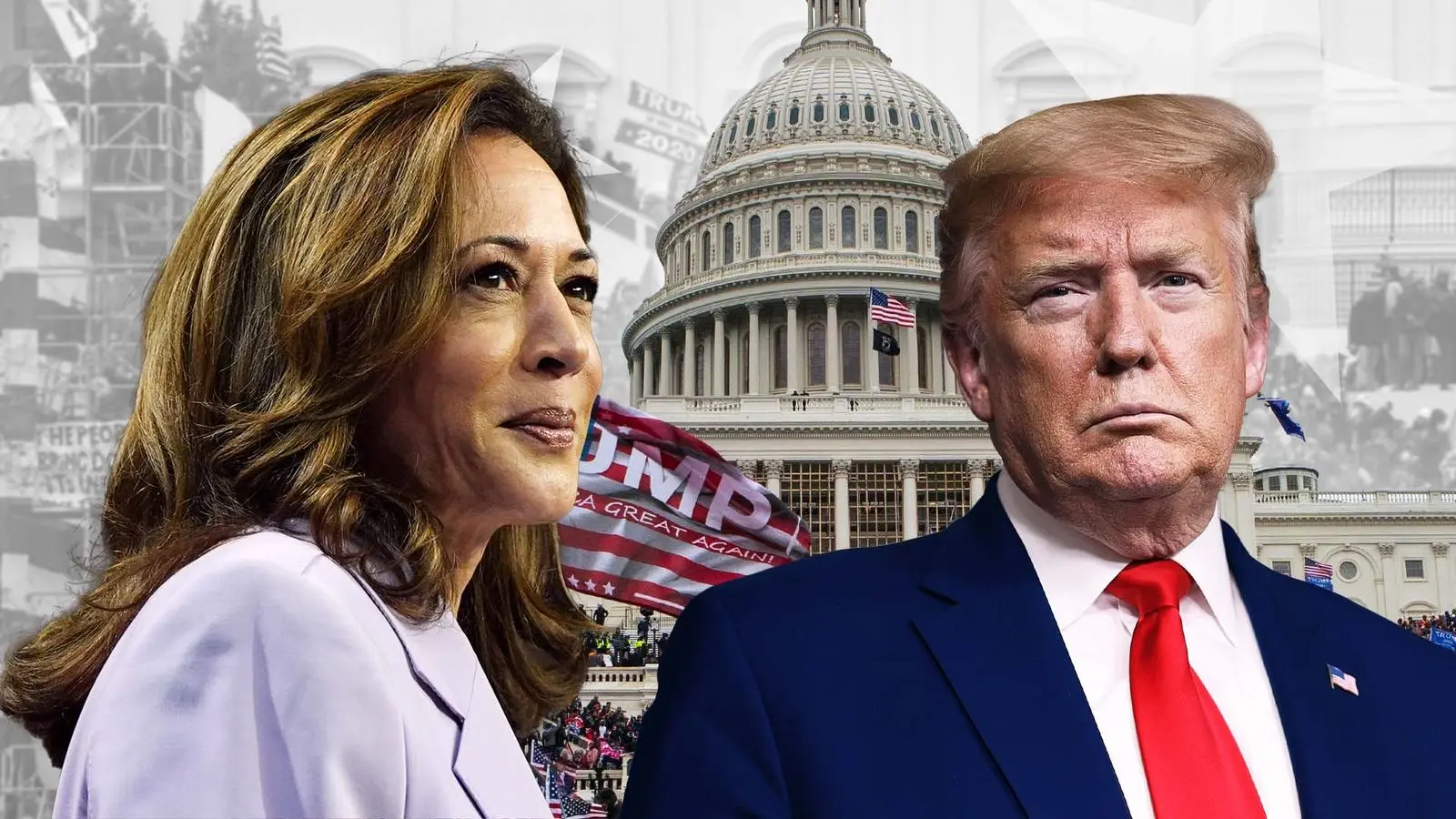
How Trump is laying the groundwork for rejecting the election result if he loses
Mr Trump has repeatedly told his supporters to make sure the Democrats don't cheat in this year's election - just one example of how he is trying to undermine confidence in the legitimacy of the very democratic process in which he is competing.
Next week's Democratic National Convention in Chicago will be characterised by a mood of relief among delegates.
The switch of candidate from the aged Joe Biden to his vice president Kamala Harris has put the party back in contention in this year's general election, when it seemed set to be flattened by Donald Trump's re-election bid for the presidency.
It still looks like a close race. And even if Ms Harris wins the vote she may not become president.
Much may also hang on how strongly Democratic candidates lower down the ticket perform. It may fall to the US Congress to uphold the constitution.
If Mr Trump "loses" to Ms Harris there are still arguably legitimate ways in which he could end up back in the White House.
Trump loyalists are already preparing for this fight - egged on with carefully unspecific rhetorical encouragement in rambling comments of the man himself.
Whether Mr Trump's protests against his defeat in 2020 amounted to a "Big Lie" or evidence of a "Big Steal", as a majority of Republicans now claim, he is preparing to do it again, if he loses.
At the very least America would be plunged into political and legal chaos, again, for months after the approaching election on 5 November.
It could be much worse. This month President Biden told CBS he is "not confident at all" that there will be a peaceful transition if Ms Harris is elected president.
"Now if I don't get elected it's gonna be a bloodbath," Mr Trump told an audience in March, leaving it ambiguous whether he was only talking about the prospects for the car industry there in Dayton, Ohio.
Lesser politicians are clumsier.
Republican Ohio state senator George Lang apologised after declaring: "I'm afraid if we lose, it's going to take a civil war to save this country."
He did not withdraw his praise for "Bikers for Trump" or the slogan "Fight! Fight! Fight!", also mouthed by Mr Trump, fist aloft, after the assassination attempt on his life.
How Trump could win with the least votes - again
To win the presidency the successful candidate does not necessarily have to get the most votes from the people.
The victor needs the support of a majority of the electoral college - at least 270 out of 538.
Technically the election votes decide the make-up of the college, state by state. Membership does not directly reflect the views of the overall US population.
Republican nominees defeated in the popular vote, including Mr Trump and George W Bush, have become US president in three of the last seven elections.
In 2000, the dispute over Florida went to the US Supreme Court, which ruled in Mr Bush's favour. Since then Mr Trump has made three appointments which have tilted the court in his favour. The justices are likely to back him if there are any legal disputes.
Former president trying to sow seeds of chaos
Mr Trump repeatedly tells his rallies that they have to do two things - they have to vote and they have to make sure that the Democrats don't cheat.
This is just one example of how he is trying to undermine confidence in the legitimacy of the very democratic process in which he is competing. He is laying the ground in advance to challenge the results if they do not go in his favour.
The strategy is a familiar one in modern US campaigns, first formulated by the Republican strategist Roger Stone as "Stop the Steal" back in 2016, in case things did not go Mr Trump's way.
They did and at the end of his presidency, Mr Trump commuted Stone's prison sentence for lying to Congress. As shown in the recent TV documentary, A Storm Foretold, Stone was bitterly disappointed that he did not get a full pardon but he has endorsed Mr Trump again in this campaign.
If Mr Trump loses the vote he may still have successfully spread chaos and confusion which calls the results into question.
There are then potential legal routes at state level and subsequently in Congress, which could even overturn the result in his favour.
This year, election officials have until 11 December to certify the results in their state.
#news #USElections
Read More...
1 year ago
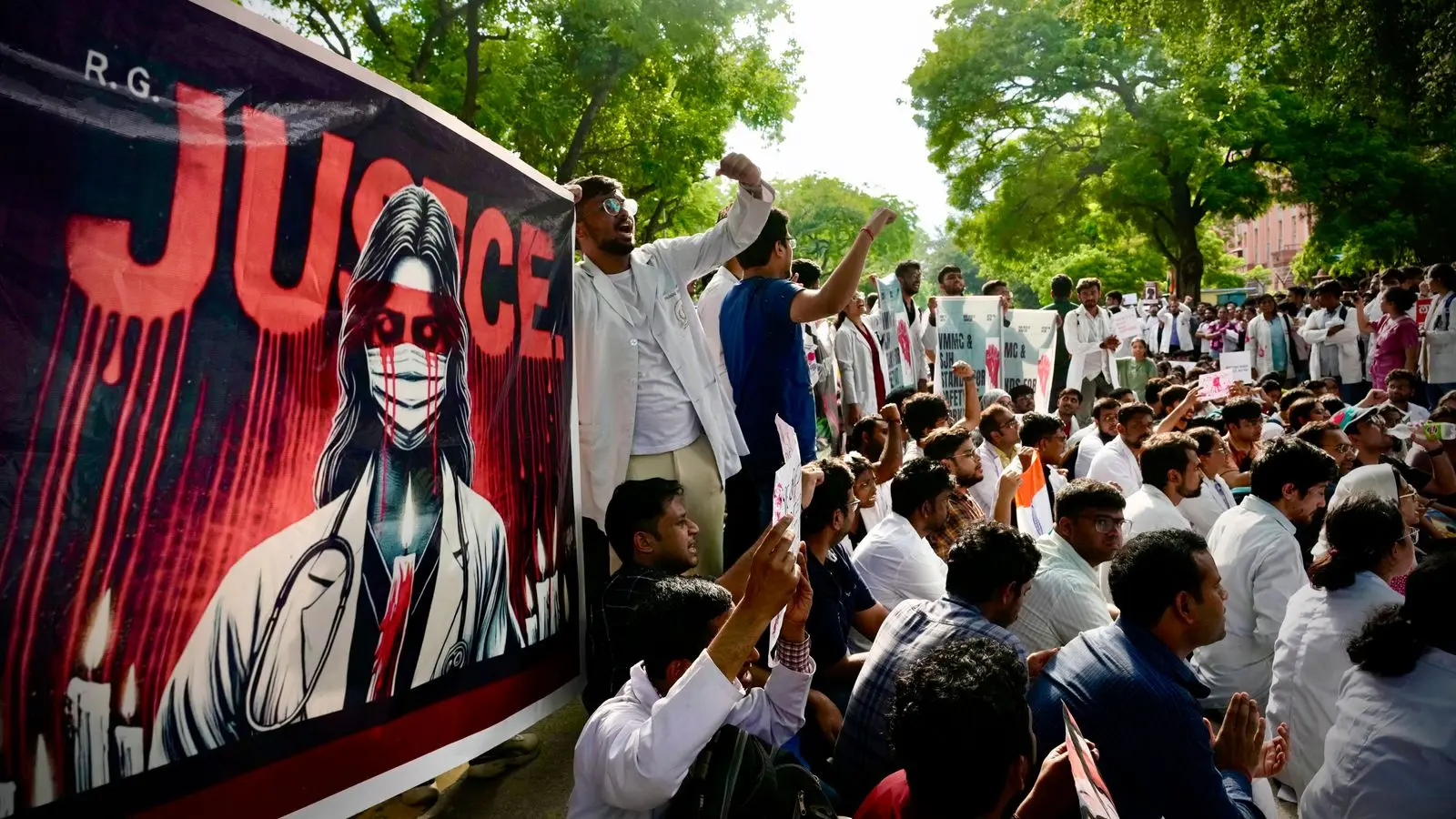
Patients turned away as doctors hold mass strike in India over rape and murder of trainee medic
Sexual violence against women is a widespread problem in India - many crimes are believed to go unreported due to stigma and a lack of faith in police.
Patients are being turned away from hospitals and clinics across India as more than a million doctors are set to join a strike in protest at the rape and murder of a trainee medic.
The 24-hour strike began at 6am local time (1.30am UK time) with non-emergency treatment such as outpatient appointments and elective procedures cancelled, said the Indian Medical Association (IMA).
The mass walkout paralysed hospitals as staff from medical colleges were drafted in to help with emergency cases.
The strike was triggered by the killing of a 31-year-old trainee doctor, whose body was found on 9 August at the college where she worked in Kolkata.
A police volunteer was arrested but the victim's family believe it was a gang rape and that more people were involved.
The case has drawn comparisons with the notorious rape and murder of a student on a bus in New Delhi in 2012.
People demonstrated near parliament in the capital on Friday - as well as cities including Kolkata, Hyderabad and Mumbai - calling for tougher sentences and guarantees of safety for doctors.
The facility where the doctor was killed, the state-run RG Kar Medical College and Hospital, was attacked on Wednesday.
"Doctors, especially women are vulnerable to violence because of the nature of the profession," said the IMA in a statement on X.
"It is for the authorities to provide for the safety of doctors inside hospitals and campuses."
Sexual violence against women and girls is a widespread problem in India with 31,516 reports of rape in 2022 - a 20% increase on 2021, according to the National Crime Records Bureau.
Many are believed to go unreported due to a stigma over sexual assault and a lack of faith in the police.
The medical college case is being handled by India's central bureau of investigation after state government officers were accused of mishandling the case.
Read More...
1 year ago